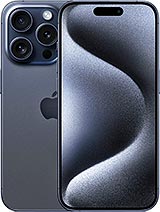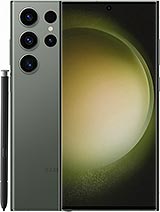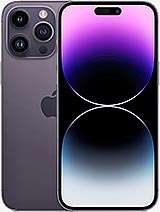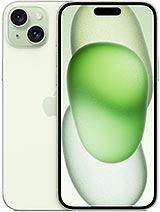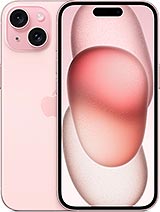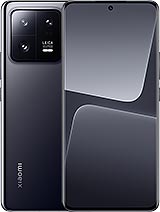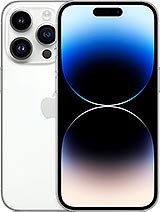Apple iPhone 15 Plus review

Upgraded 6.7-inch OLED with Dynamic Island
Apple has upgraded the display on this year's non-Pro iPhones, and this brings the iPhone 15 Plus' panel closer to that of the 15 Pro Max in terms of overall feel and technical specifications. The 15 Plus retains the 6.7-inch diagonal, 1290 x 2796px resolution as well as the Super Retina XDR OLED part of the name, skipping the LTPO part. This leads us to the refresh rate - still 60Hz. Objectively speaking, that's a serious lag behind the industry standard for the last couple of years. One would expect a 120Hz display, at the very least, the LTPO part is optional.

Aside from the refresh rate, though, the display excels in every other aspect. It's extremely bright in auto mode, peaking at 1,642 nits. In manual control, the panel gets up to 820 nits, while maintaining exceptional color accuracy with an average dE2000 of 0.7. Apple advertises 2,000 nits of peak brightness, but that's achievable only when watching HDR-compatible content with small highlight areas.
Speaking of HDR, the panel is equipped with HDR10 and Dolby Vision certification for HDR-enabled entertainment on the go. You can watch Dolby Vision or another type of HDR content on YouTube, Netflix, Prime Video, etc.
Battery life
The battery capacity of the iPhone 15 Plus is ever so slightly bigger than its predecessor. The cell is rated at 4,383 mAh, but due to the more efficient A16 Bionic SoC, the 15 Plus delivers considerably longer battery life. Especially in the screen-on tests, which are arguably the most important aspect of our battery endurance tests.
So much so that the iPhone 15 Plus appears to outperform the iPhone 15 Pro Max in the web browsing test by a small margin as well as in the gaming test. Even the Active Use Score is higher on the 15 Plus. And compared to other competitors in the segment, the iPhone 15 Plus stands out as a battery endurance champion, outperforming phones like the Samsung Galaxy S23 Ultra and the Xiaomi 13 Pro.
Expand to reveal our legacy battery test (Endurance rating). How we test now.
The battery capacity of the iPhone 15 Plus is ever so slightly bigger than its predecessor. The cell is rated at 4,383 mAh, but due to the more efficient A16 Bionic SoC, the 15 Plus delivers considerably longer battery life. Especially in the screen-on tests, which are arguably the most important aspect of our battery endurance tests.
With the new hardware on board, the iPhone 15 Plus now gets much closer to the 15 Pro Max in terms of endurance, shrinking the gap between the two models.

Our battery tests were automated thanks to SmartViser, using its viSerDevice app. The endurance rating denotes how long the battery charge will last you if you use the device for an hour of telephony, web browsing, and video playback daily. More details can be found here.
Video test carried out in 60Hz refresh rate mode. Web browsing test done at the display's highest refresh rate whenever possible. Refer to the respective reviews for specifics. To adjust the endurance rating formula to match your own usage patterns check out our all-time battery test results chart where you can also find all phones we've tested.
Compared to other smartphones on the market, though, the 15 Plus seems to be quite competitive and even edges out some of its competitors in the screen-on scenarios.
Charging speed
Although Apple doesn't give away the iPhone 15 Plus' charging specs, it should support faster than 20W charging. The company advertises 50% charge in 30 minutes using the standard 20W adapter from Apple, but we carried out our test using a 30W PD charger. The results were quite interesting, to put it mildly.
The device got 53% of the charge back in the first 30 minutes, which is in line with Apple's claims, but we were particularly surprised by the charging time to full - 1 hour and 34 minutes. This is notably faster than the iPhone 15 Pro Max. It's also interesting to note that we carried out the test twice - with a compatible 30W PD charger and Apple's standard 20W charger and the results were absolutely identical.
In addition to the wired and 15W wireless (MagSafe) charging, this year's iPhone 15 Plus also supports 4.5W reverse wired charging via the new USB-C port.
Speakers
As is usually the case, the iPhone 15 Plus comes with a hybrid speakers setup - one of the speakers is facing downward while the other acts as an earpiece. Unlike most hybrid setups we've seen, the iPhones offer a balanced sound coming out of both speakers.
Unfortunately, this year's 15 Plus fell short in our loudness test, earning a "Good" -27.7 LUFS score - considerably lower than last year's 14 Plus, which scored -24.7 LUFS.
Quality-wise, on the other hand, the 15 Plus remains consistent by delivering excellent sound with punchy highs, clear vocals and pronounced bass - definitely one of the best speakers in town.
Use the Playback controls to listen to the phone sample recordings (best use headphones). We measure the average loudness of the speakers in LUFS. A lower absolute value means a louder sound. A look at the frequency response chart will tell you how far off the ideal "0db" flat line is the reproduction of the bass, treble, and mid frequencies. You can add more phones to compare how they differ. The scores and ratings are not comparable with our older loudspeaker test. Learn more about how we test here.
Reader comments
- Apple
- 29 Oct 2024
- 7yr
The guy who stole my iPhone 15 plus told the police " they don't even have a 15plus" which is why he wanted it. He was the mgr of Team Mobile. Now isn't that the shit!!
- Anonymous
- 29 Oct 2024
- 7yr
I call Apple my family. We became friends over the snow leopard Apple operating system. I wanted one so bad while everyone else had windows! ( I get it ). I never did get the snow leopard because I could not afford it but it was a beautiful dream. I ...
- Apple
- 29 Oct 2024
- 7yr
Funny how everyone lies. You see there is no iphone15plus for sale because it does not exist for the public. I am the only one who has a iphone15plus. Apple made 15plus just for me. Why? Because we love each other. I know quality when I see it and so...

